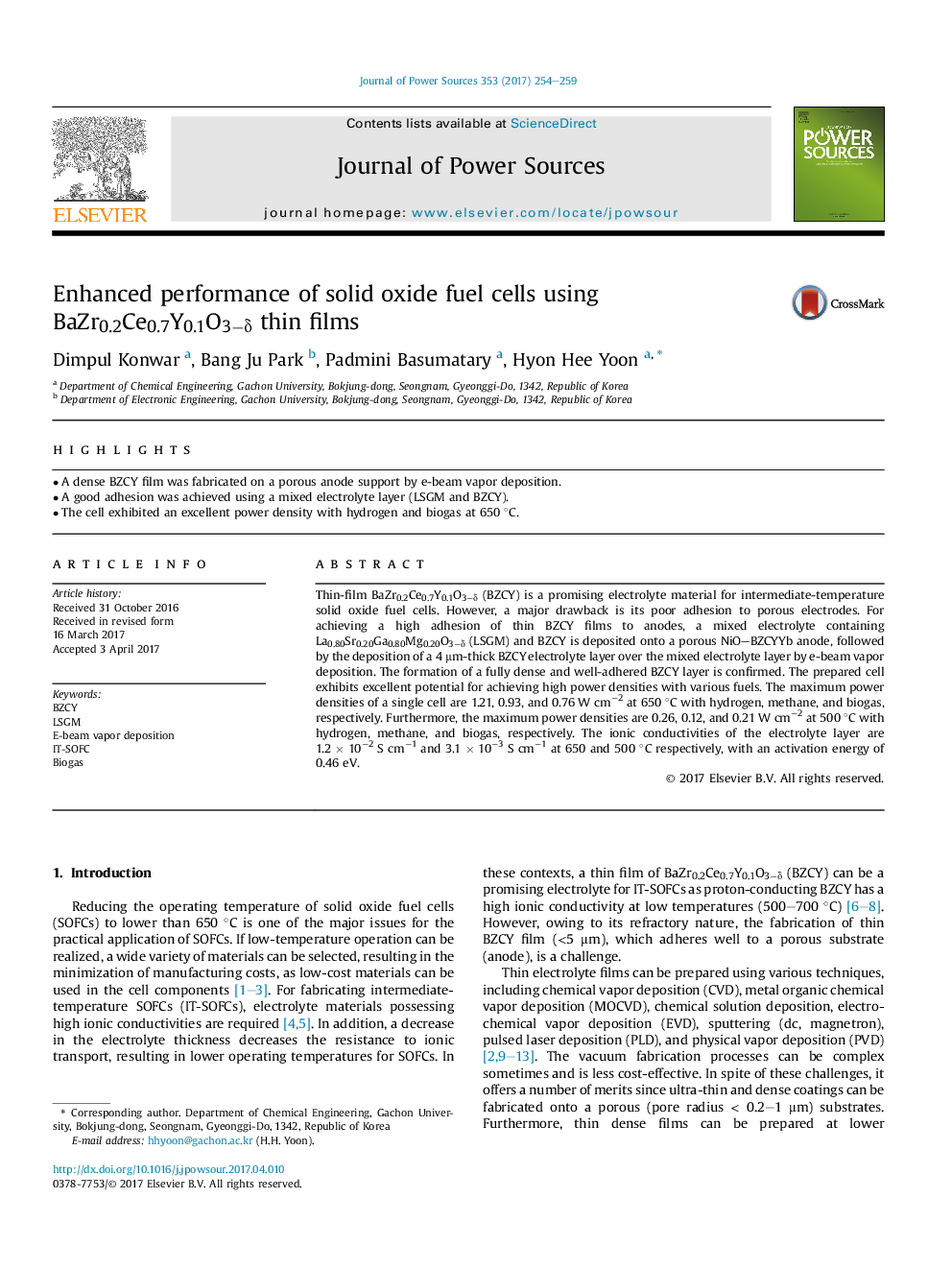| Article ID | Journal | Published Year | Pages | File Type |
|---|---|---|---|---|
| 5149169 | Journal of Power Sources | 2017 | 6 Pages |
Abstract
Thin-film BaZr0.2Ce0.7Y0.1O3âδ (BZCY) is a promising electrolyte material for intermediate-temperature solid oxide fuel cells. However, a major drawback is its poor adhesion to porous electrodes. For achieving a high adhesion of thin BZCY films to anodes, a mixed electrolyte containing La0.80Sr0.20Ga0.80Mg0.20O3âδ (LSGM) and BZCY is deposited onto a porous NiO-BZCYYb anode, followed by the deposition of a 4 μm-thick BZCY electrolyte layer over the mixed electrolyte layer by e-beam vapor deposition. The formation of a fully dense and well-adhered BZCY layer is confirmed. The prepared cell exhibits excellent potential for achieving high power densities with various fuels. The maximum power densities of a single cell are 1.21, 0.93, and 0.76 W cmâ2 at 650 °C with hydrogen, methane, and biogas, respectively. Furthermore, the maximum power densities are 0.26, 0.12, and 0.21 W cmâ2 at 500 °C with hydrogen, methane, and biogas, respectively. The ionic conductivities of the electrolyte layer are 1.2 Ã 10â2 S cmâ1 and 3.1 Ã 10â3 S cmâ1 at 650 and 500 °C respectively, with an activation energy of 0.46 eV.
Related Topics
Physical Sciences and Engineering
Chemistry
Electrochemistry
Authors
Dimpul Konwar, Bang Ju Park, Padmini Basumatary, Hyon Hee Yoon,
